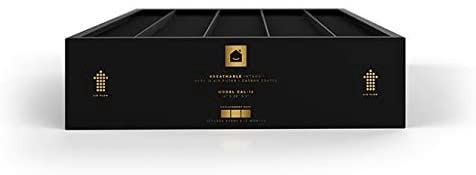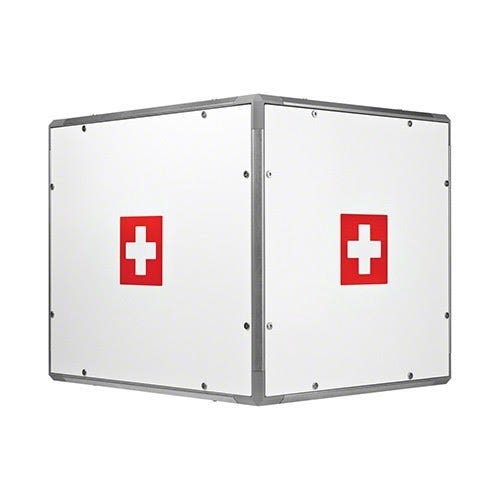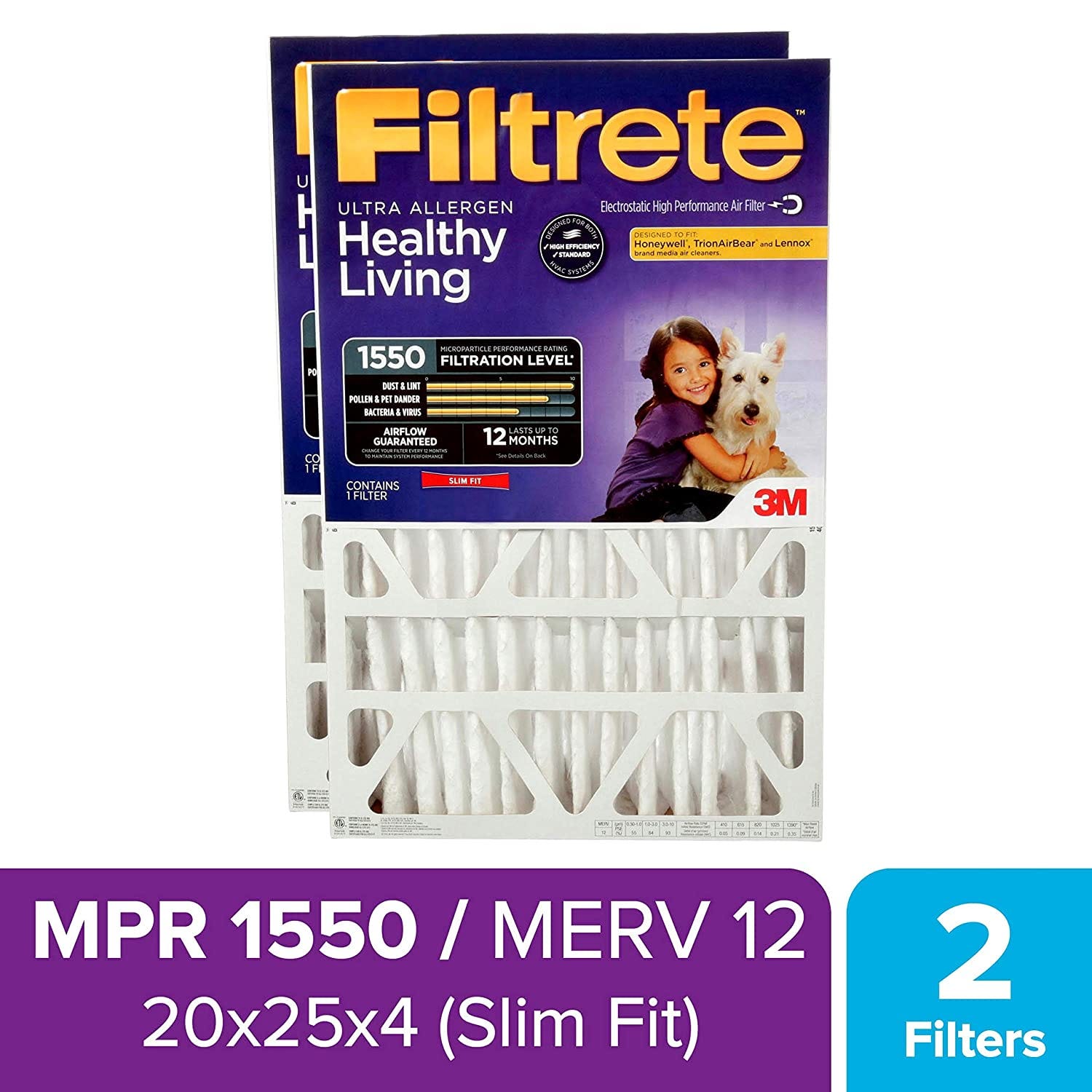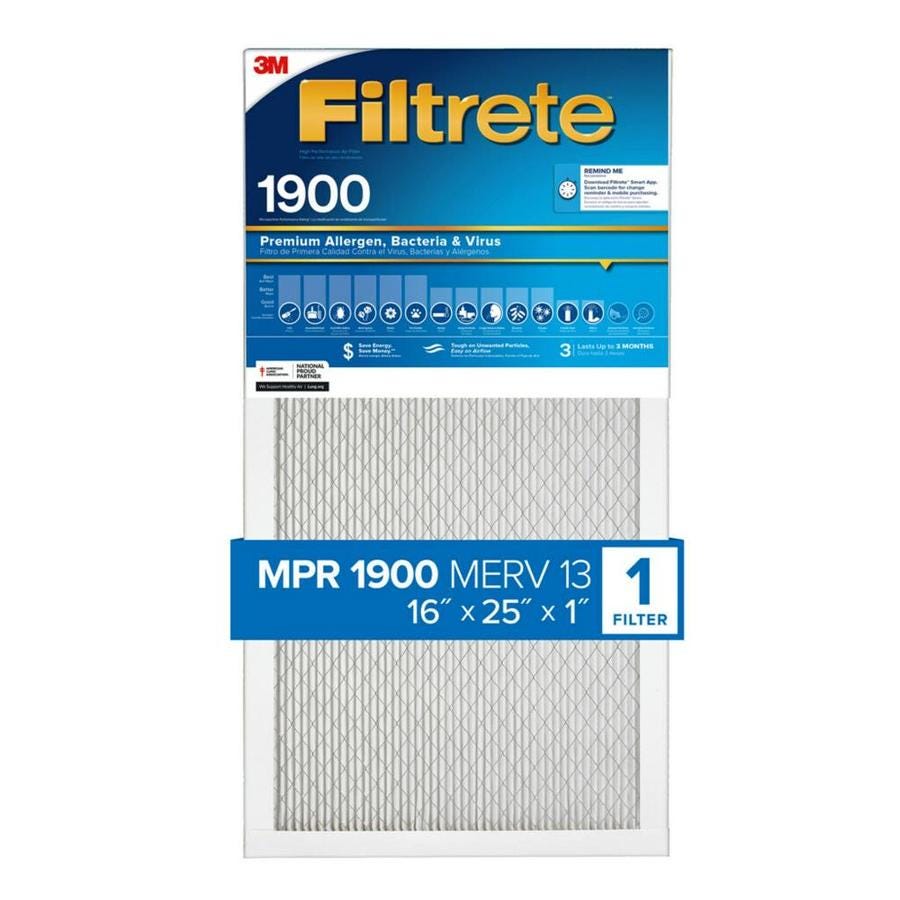There is every reason to invest in a furnace and AC filter for wildfire smoke. If you live in California or other fire-prone parts of the country, you’ve realized by now (sadly) that wildfires are becoming an every-year occurrence. Beyond their devastating impact on property and our environment, wildfires also negatively impact indoor and outdoor air quality.
The EPA strongly recommends using your home’s central HVAC system as an air cleaner during wildfire season. After all, your central heater or air conditioner fan can recirculate as much air as about a dozen standalone air purifiers. With the right furnace and AC filter, you can soon be breathing much cleaner air.
Unfortunately, not all filters are created equal, and the marketing material from the various filter brands can be confusing and often misleading. In reality, the performance of most HVAC air filters, whether it’s for a furnace or AC, is insufficient to maintain safe indoor air during a wildfire because wood smoke creates fine particles not commonly found in air. The goal of this article is to compare the best AC and furnace filters for wildfire smoke.
Disclaimer: In this article, I’m only going to compare pleated filters. At this point in my career, I have worked on enough ventilation systems (probably over 10,000) to conclude that electronic filters require too much homeowner maintenance (which almost never happens) to function at their peak air filtration efficiency.
First, let’s cover some basic terms.
Most household dust is larger than a micrometer, which puts it in the 1–3 or 3–10 micrometer groups. However, based on the EPA’s latest wildfire smoke guide, wildfire smoke particles tend to fall within the range of 0.4–0.7 micrometers.
Three Factors to Consider in Choosing the Ideal AC Filter
MERV rating: The MERV (Minimum Efficiency Reporting Value) is a rating system that was developed by the American Society of Heating, Refrigerating and Air-Conditioning Engineers (ASHRAE). Each filter’s efficiency is tested against three distinct size ranges of aerosMERV rating: The MERV (Minimum Efficiency Reporting Value) is a rating system that was developed by the American Society of Heating, Refrigerating and Air-Conditioning Engineers (ASHRAE). Each filter’s efficiency is tested against three distinct size ranges of aerosols (0.3–1, 1–3, and 3–10 micrometers). Most household dust is larger than a micrometer, which puts it in the 1–3 or 3–10 micrometer groups. However, based on the EPA’s latest wildfire smoke guide, wildfire smoke particles tend to fall within the range of 0.4–0.7 micrometers.
Resistance, aka pressure drop: Pressure drop measures the resistance of a filter to air. The higher the pressure drop, the harder it is for your furnace (or AC) fan to operate, which increases energy consumption. This means the fan either has to work overtime to heat, cool, and filter the air in your home (assuming your HVAC fan is equipped with the most commonly used PCS motor) or draw more power to maintain its speed (whenever an ECM motor is used). In the US, the pressure drop is usually measured in inches of water column (wc) on a scale of 0–1, where lower is better.
Loading capacity: Loading capacity refers to the amount of dust and debris the filter can absorb before reaching the maximum pressure drop it’s rated for. The higher the capacity, the less frequently the unit requires replacement. As an example, if unit A has four times the loading capacity of unit B, and unit B requires replacement every three months, unit A would require replacement every 12 months.
Ranking the best AC and Furnace Air Filters for Improved Indoor Air Quality

Our pick: Breathable Intake CAL16 and CAL 20
Efficiency at 0.3–1 micrometer: About 96%
Initial resistance/pressure drop: About 0.21 @ 1,400 cfm
Replacement frequency: About once a year
Our top picks for the best AC and furnace air filter for wildfire smoke are the CAL16 and CAL20. They include an absorbing carbon layer, and offer the highest efficiency at the 0.4–0.7 micrometer particle size range (which is extremely important during a wildfire, as noted above).
On top of that, it provides both a high loading capacity (about four times the capacity of most HVAC filters) and a low resistance/pressure drop (nearly half the pressure drop of most furnace and AC filters). It’s a beast of a filter! Each filter costs about $100, which is considered high. However, the benefits far outweigh the cost.
There is only one drawback to this unit: it requires a very specific filter housing because it is five times the thickness of most filters. You’ll need to hire a pro to modify your return duct to be compatible, which can cost anywhere between $600-$1,200.
Pros:
- Highest efficiency at 0.3–1 micron
- Durable
- Low resistance (more energy efficient and less wear and tear on your HVAC system)
- Low replacement frequency (about once a year)
Cons:
- Requires a dedicated housing
- Housing is not a DIY project (requires professional installation)

Runner-up: IQAir Perfect 16
Efficiency at 0.3–1 micrometer: About 96%
Initial resistance/pressure drop: About 0.22 @ 1,400 cfm
Replacement frequency: About once a year
Our 2nd pick for the best AC and furnace air filter for wildfire smoke is the IQAir Perfect 16. It’s a well-constructed system with an M-configuration (four filters zigzagged), which allows for air to flow more easily. Its performance is very similar to that of our top pick.
The cost, however, make this difficult to recommend as a top pick. It costs six to eight times as much as the CAL. The retail price fluctuates between $2,500 and over $3,000 and each replacement will cost about $300. Otherwise, there is almost no difference between this system and the Breathable Intake system.
Pros:
- Highest efficiency at 0.4–0.7 micron
- Durable
- Low resistance (more energy efficient and less wear and tear on your HVAC system)
- Low replacement frequency (about once a year)
Cons:
- Extremely expensive
- Requires a dedicated housing
- Installing the housing is not a DIY project (requires professional installation)

Filtrete MPR 1550 DP filters (16×25)
Efficiency at 0.3–0.1 micrometer: About 50%
Initial resistance/pressure drop: About 0.40 @ 1,200 cfm
Replacement frequency: About once a year
Filtrete is a 3M brand, by far the most popular furnace and air filter brand in the US. The MPR 1550 DP offers solid performance for a traditional 4-inch filter. It’s about 50% efficient at 0.3–1 micrometer particles, which is not that impressive, but much better than many filters in the 4-inch category.
When compared to the IQAir and Breathable Intake, this model is rated at relatively high resistance (about 0.40wc @ 1,200 cfm), which will shorten the life of your furnace/AC while also increasing the operating cost.
Pros:
- Highest efficiency for a traditional/general purpose filter 4-inch thick filter
Cons:
- Less energy efficient due to its high resistance/pressure drop
- More wear and tear on your HVAC system (again, due to its high resistance/pressure drop)
- Average performance at the sub-micrometer particle size range

No housing required: Filtrete MPR 1900 filters
Efficiency at 0.3–0.1 micrometer: About 50%
Initial resistance/pressure drop: About 0.46 @ 1,400 cfm
Replacement frequency: About four times a year
The MPR 1900 offers the best performance in the traditional 1-inch filter category. Think of it as a skinnier version of the 1550 DP with a slightly better filtration efficiency.
So why is this filter on the list? Because if you’re not planning to replace your filter housing, this is the best option that would actually fit in your current system. They come in many different sizes and can slide into most HVAC systems.
Pros:
- Highest efficiency for a traditional/general purpose filter
- Fits in most HVAC systems. No modification is required.
Cons:
- Less energy efficient due to its high resistance/pressure drop
- More wear and tear on your HVAC system (again, due to its high resistance/pressure drop)
- Average performance at the sub-micrometer particle size range
- High replacement frequency (every three months)
So there you have it. I’ll constantly update this article as new options emerge, but for the time being, these are the best furnace and HVAC filters we’ve tested.